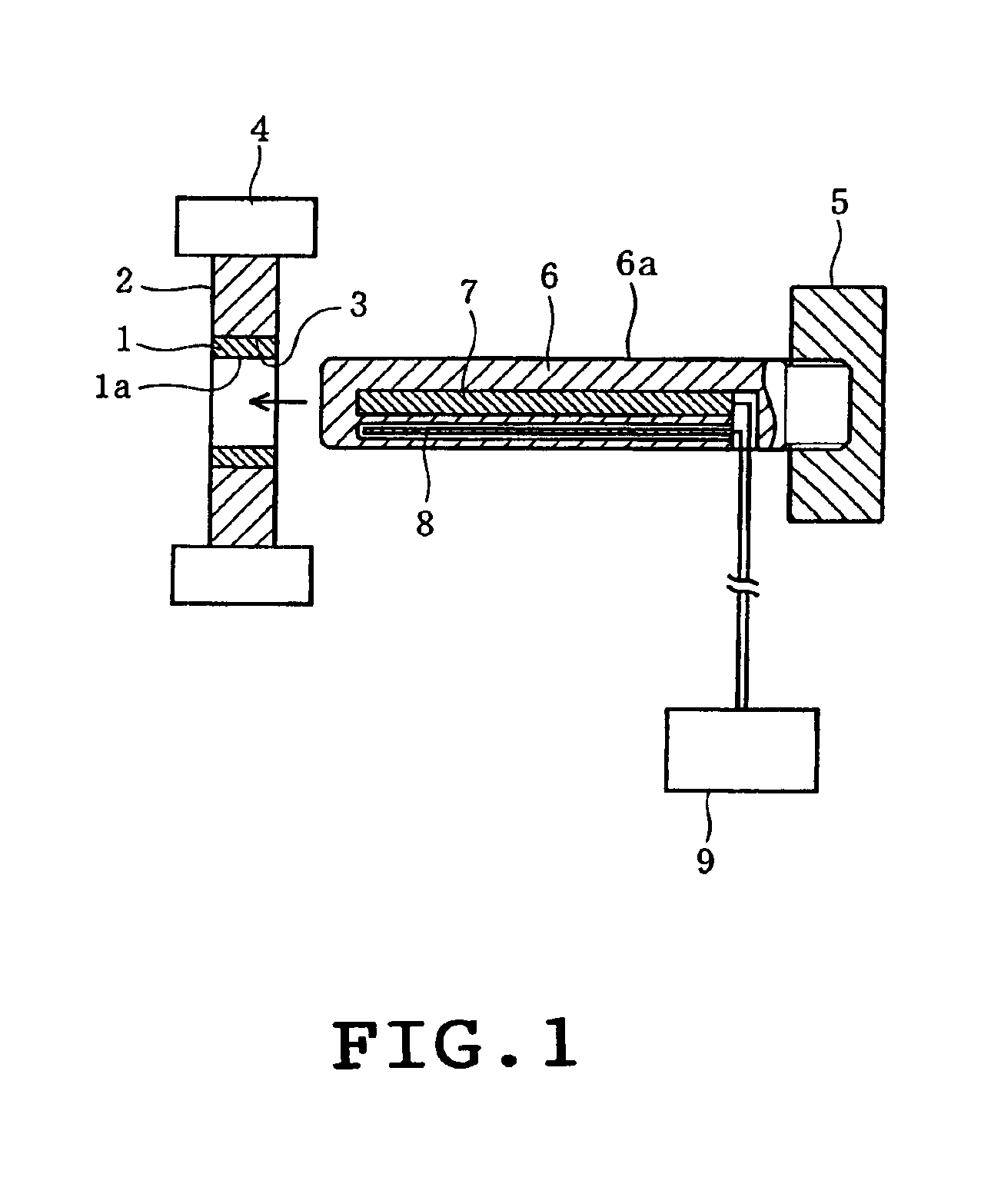Method of processing inner surface of bearing
a technology of inner surface and bearing, which is applied in the direction of sliding contact bearings, mechanical equipment, other domestic objects, etc., can solve the problems of reducing the working requiring blade maintenance, and affecting the service life of the blade, so as to improve the roughness of the resin layer more favorably, improve the roughness of the resin layer, and improve the effect of mold release property in pulling the mandrel from the bearing
- Summary
- Abstract
- Description
- Claims
- Application Information
AI Technical Summary
Benefits of technology
Problems solved by technology
Method used
Image
Examples
Embodiment Construction
[0023]Bearings used for examples are produced as follows.
[0024]Firstly, a flat plate of a thickness of 1.2 mm on which surface copper plating is applied is used as a steel plate constituting a backing metal layer of a bearing. On the steel plate (or on the copper plating), copper alloy powder is spread so as to have a thickness of 0.3 mm, and then the copper alloy powder is sintered by heating it up to 750 to 900° C. in a reducing atmosphere, thereby a porous sintered body is obtained on the backing metal layer (or on the copper plating).
[0025]Then, the porous sintered body is impregnated and coated with a synthetic resin to form a resin layer. Here, following three kinds of resins are employed as the synthetic resin, and the resin layer is formed as follows.
1. PEEK (polyether etherketone) (thermoplastic resin)
[0026]The PEEK resin of a pellet shape is formed into a resin sheet by a sheet extruder. While heating and maintaining the porous sintered layer on the above-described backing...
PUM
| Property | Measurement | Unit |
|---|---|---|
| roughness | aaaaa | aaaaa |
| roughness | aaaaa | aaaaa |
| thickness | aaaaa | aaaaa |
Abstract
Description
Claims
Application Information
 Login to View More
Login to View More - R&D
- Intellectual Property
- Life Sciences
- Materials
- Tech Scout
- Unparalleled Data Quality
- Higher Quality Content
- 60% Fewer Hallucinations
Browse by: Latest US Patents, China's latest patents, Technical Efficacy Thesaurus, Application Domain, Technology Topic, Popular Technical Reports.
© 2025 PatSnap. All rights reserved.Legal|Privacy policy|Modern Slavery Act Transparency Statement|Sitemap|About US| Contact US: help@patsnap.com

